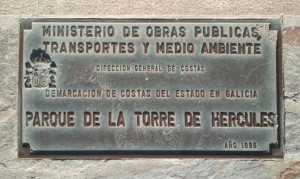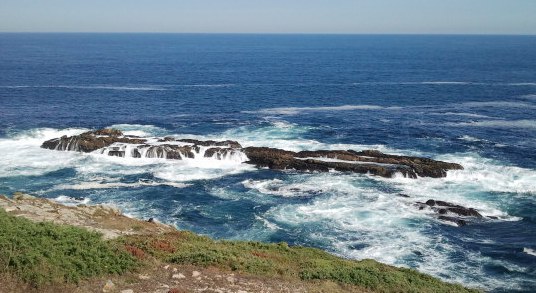“A Coruña” sits in the northwest corner of Spain. The language of this region is called either Galician or Gallego. Yet most scholars consider Portuguese and Gallego to be dialects of a single “romance” (derived from Latin) language. However, politics dictates that we give it its own name. The Spanish (Castellano) name of the town is “La Coruña”.
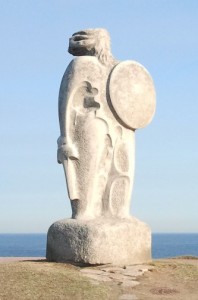
We disembarked the ship with the modest goal of visiting the “Tower of Hercules”, an ancient lighthouse at the northern side of the city. Though the name evokes Greek mythology, the original lighthouse was built by the Romans in the first of second century CE.
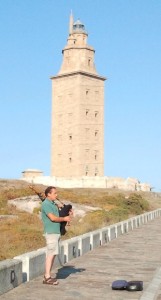 We blundered our way to the monument on a city bus, and as we approached the tower on foot encountered a “gaitero” (bagpiper). A form of bagpipe is a traditional instrument in this region, and was not introduced from Scotland. In fact evidence seems to indicate that bagpipes in this part of Spain predated any such instrument in the British Isles. Still, it is important to note that parts of Spain have a Celtic heritage.
We blundered our way to the monument on a city bus, and as we approached the tower on foot encountered a “gaitero” (bagpiper). A form of bagpipe is a traditional instrument in this region, and was not introduced from Scotland. In fact evidence seems to indicate that bagpipes in this part of Spain predated any such instrument in the British Isles. Still, it is important to note that parts of Spain have a Celtic heritage.
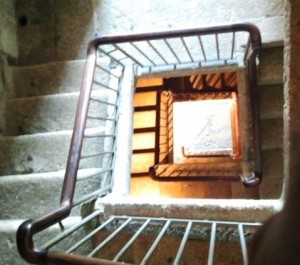
The lighthouse, billed as the oldest working lighthouse in the world, has been rebuilt several times over its 2000 year history, but remains of the original Roman foundations are still present, and can be viewed as you enter the building.The tower is quite impressive, and you can climb a series of winding steps on the inside to get to the top.
Understandably, the view of the sea is wonderful from the top.
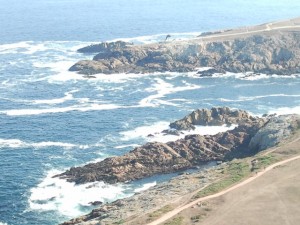 After descending the tower, we walked a bit along the shore to admire the waves crashing over some tiny outcroppings of rock.
After descending the tower, we walked a bit along the shore to admire the waves crashing over some tiny outcroppings of rock.
We then headed back into town on a bus in search of beer and bocadillos. We were well rewarded!

